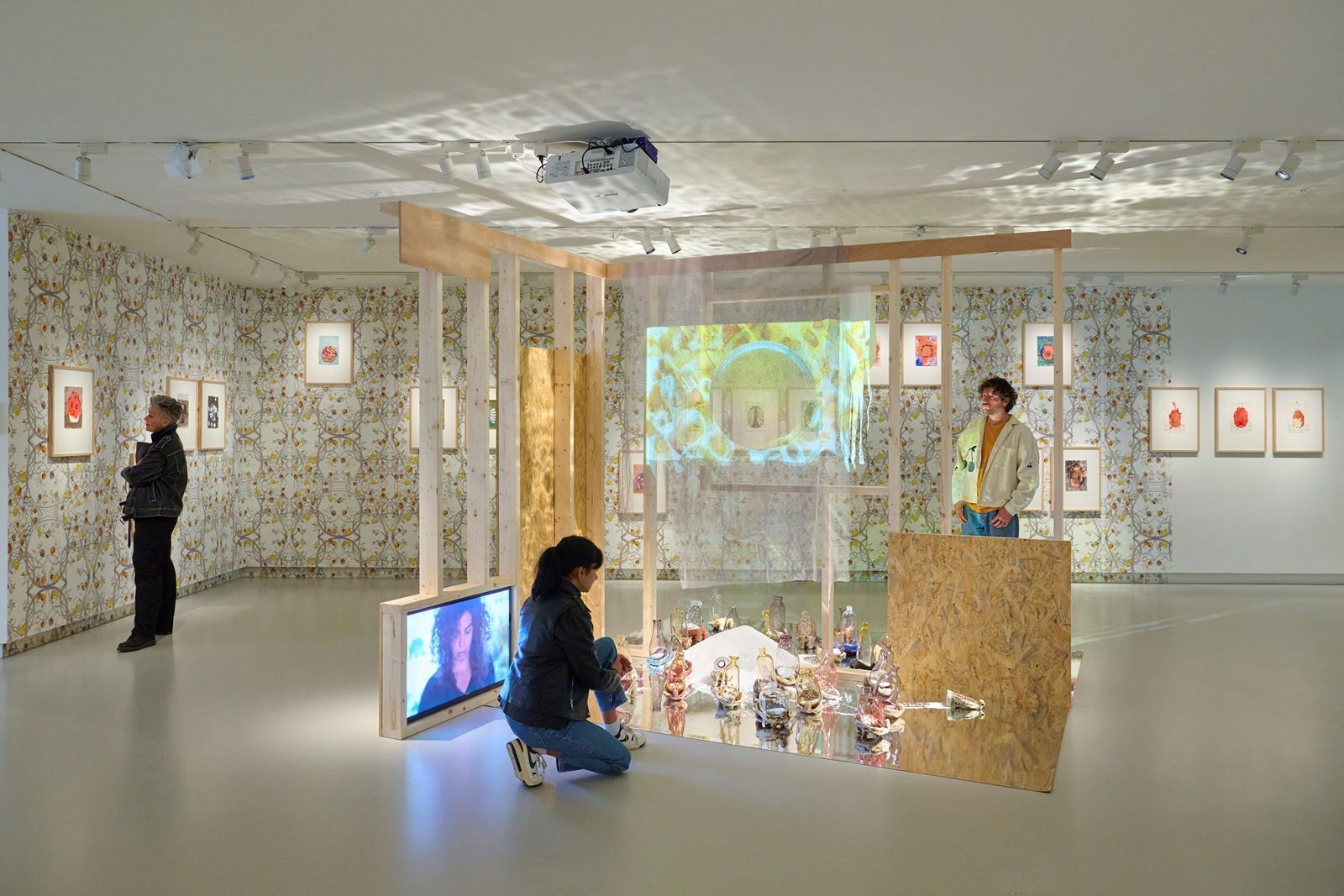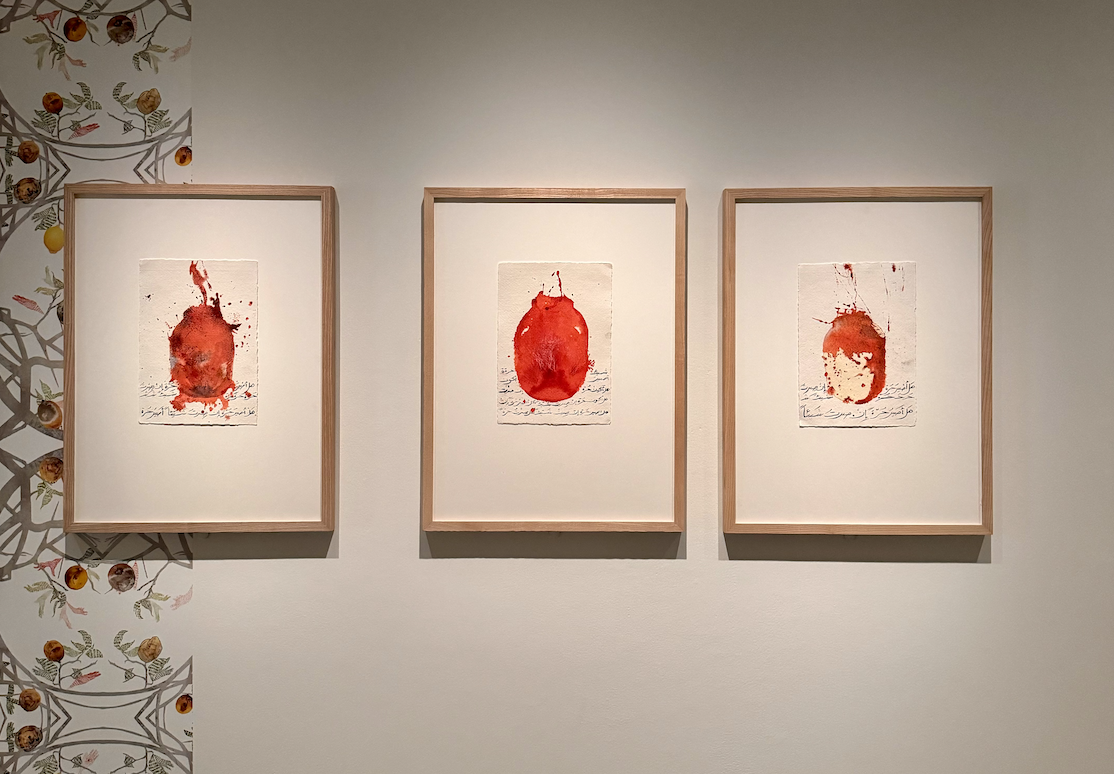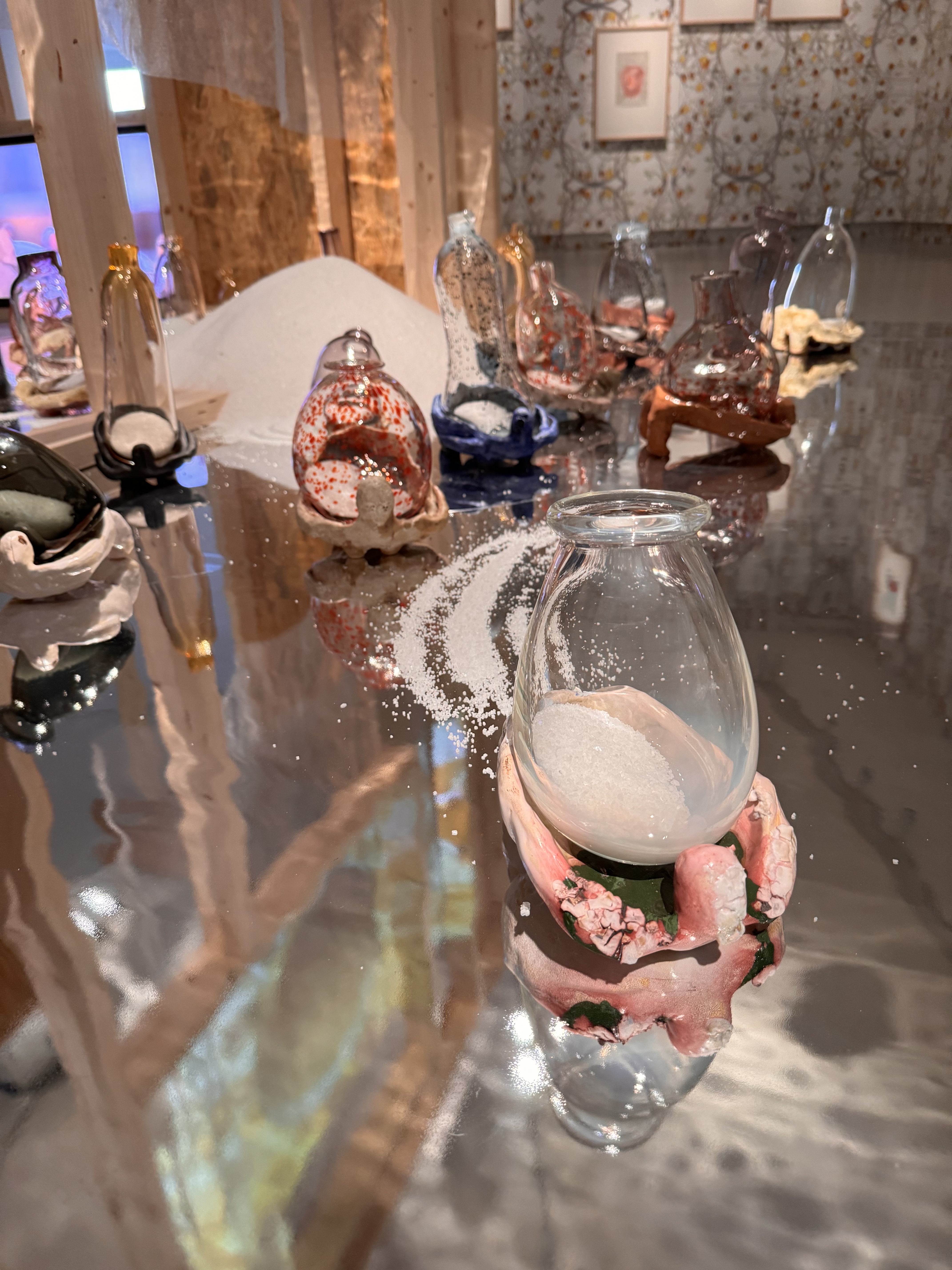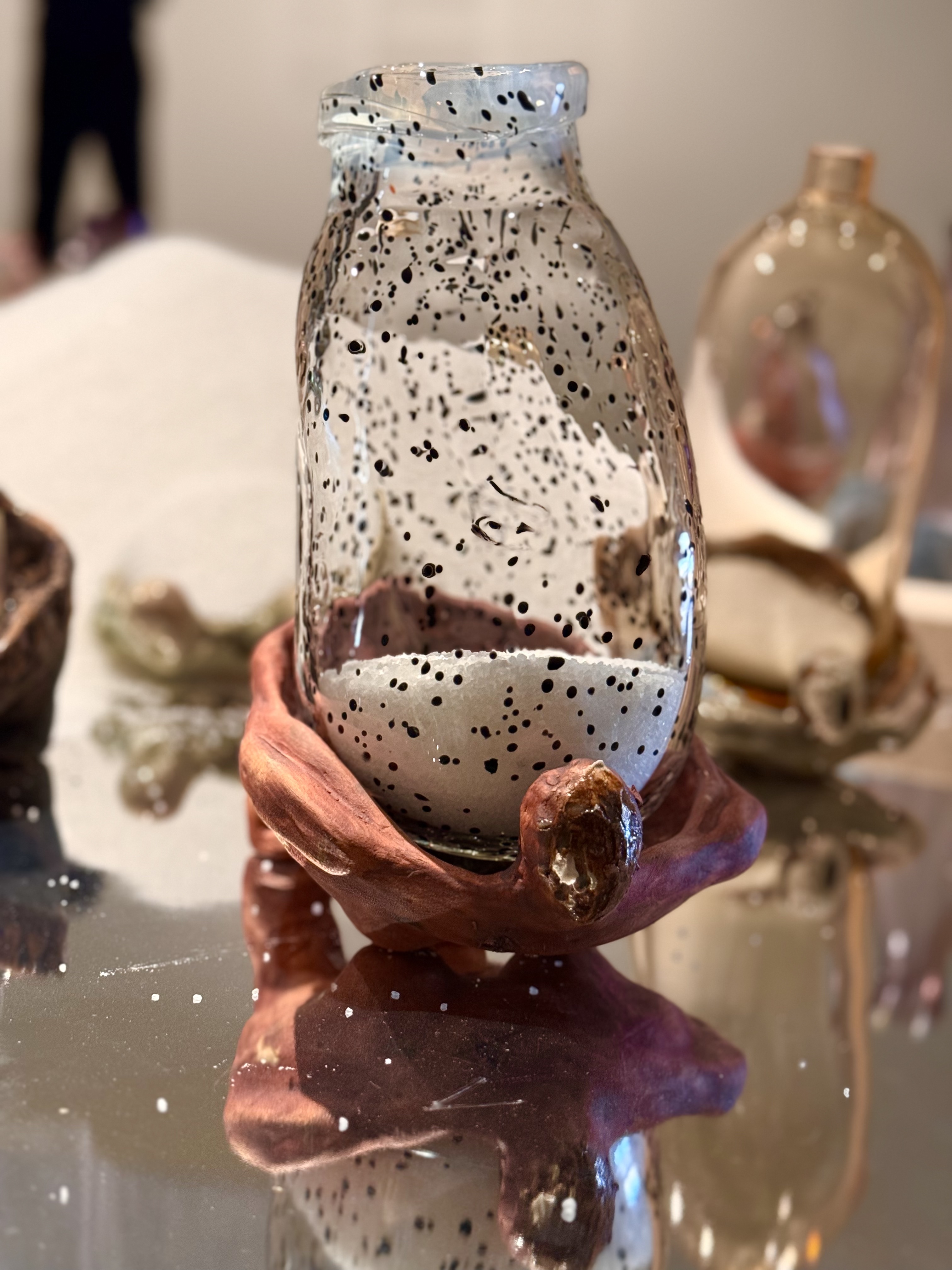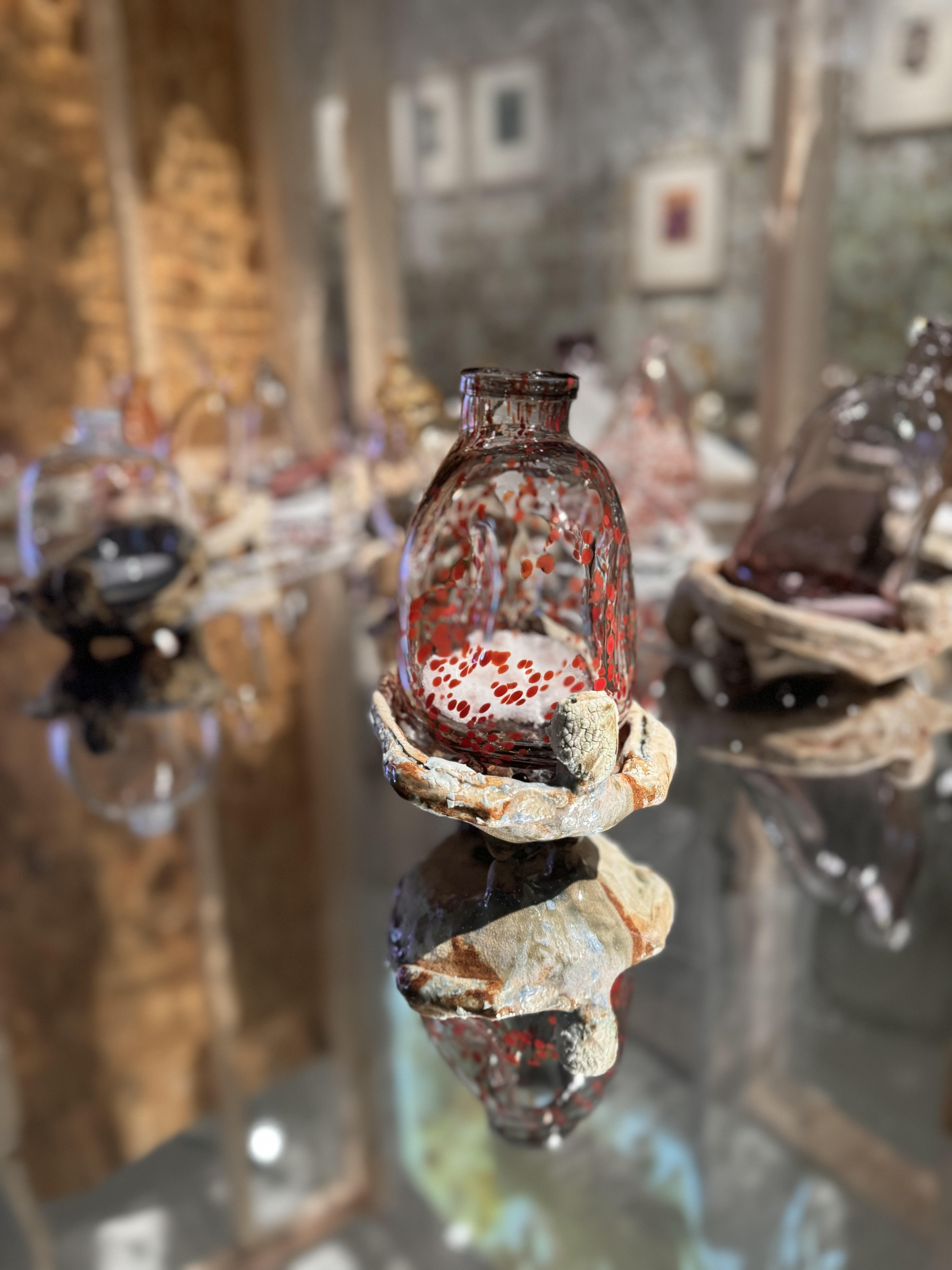Sour Things: The Pantry
multimedia installationWooden structure, 2 videos, soundscape, ceramics, glass, drawings, wallpaper, salt.
Sour Things: The Pantry, emerged in the midst of war. After the bombardment of Gaza in October 2023. While houses were being flattened. While families were forced to flee without time to gather the smallest things. While homes were reduced to rubble and kitchens buried in dust. Around me, around us, the structures that hold life, walls, shelves, floors, routines, were being broken.
I emptied my own pantry in Ramallah before leaving. I unscrewed jars I had tended for years. I poured brine into the sink. What I felt in my own kitchen was only a small echo of what was happening on a mass scale. But it was real, visceral, it shattered something. The jars, once vessels of continuity, became reminders of everything that could no longer be held.
To ferment, you need stillness. You need rootedness. But preservation is a technique of displacement. It belongs to those who must prepare without knowing when, or if, the jar will ever be opened again. In times of unrest, salt becomes more than mineral, It becomes a form of belief, a preparation for return. Salt is hope, Salt is future time, that os a gathering when opening a jar of ferment is possible again.
How does the pantry of the uprooted and displaced looks like?
How would preservation practices look when you are in a no-place, residing in liminality and in-betweenness. How would your pantry space feel like, when the walls have one foot in construction, and the other in demolition? What would it say?
This pantry is political. It is what remains when the architecture of daily life collapses; gesture of care placed in full view, surrounded by the silence of what has been lost.
Comissioned and produced by Noordbrabants Museum/ Netherlands, for Imagine Home exhibition Curated by Nina Folkersma.
Glass produced by Marc Barreda, courtusy of NIKA Project Space.
Sour Cities, stereo,, 15-min loop
Soundscape composition and design by Isaac Sullivan
Text and voice of Mirna Bamieh
Sour Cities mediates a text entitled “When life gives you lemons over and over again," in which the artist looks at traces and imprints of her life, with its constant movement and rootlessness, in the way it made her body sour, amidst a world that continually feels on the verge of collapse. Here, Bamieh's vocals – multiplied, fragmented, and recorded in varying sonic registers to imply a polyphonic subjectivity, interwoven with Sullivan's textural swarms of noise, which consolidate field recordings, vocal sampling, and granular synthesis.
Sour Wall, Sour Wall, wallpaper, 9x5 meters
Collaborarion with Dima Bamieh, 2024.
A wallpaper design that suggests domesticity from a distance, but becomes more unsettling the closer you look; a geometric concrete branch of a tree with lemons, eyes, leaves, human backs, and lots of rot. It marks the pantry space, making it inhabit the liminality of past and present, being and non-being. The wallpaper treads in its design, along concealing and revealing, all things sour, all things hidden, all things decaying.
Sour Lives, ceramic and glass, 25x20x13cm, 32 unique pieces, 2023.
Glass produced specifically for Sour Lives by Marc Barreda, 2024
Turtle creatures, with human body parts, registering pain and trauma in their chests and guts that can only be seen by looking closely at their reflection in the mirrored floor. They are the survivors, the immigrants, the ones who will return, carrying a handful of salt in their glass vessel home, heavy on their backs, moving slowly toward a future arrival, a future moment when these jars will be filled with ferments and the initiation into home and life will be possible again.
Sour Jars, watercolor, ink,brine on artisanal coton paper, 21.5x29cmcm, 22 drawings, 2023
A sentence written by a thirteen-year-old Gazan girl and shared on the Palestinian Museum's social media, "Would I be free if I were an object?" This sentence felt so heavy on my heart, the helplessness inscribed in it was immense. I made this series of drawings to understand it. My object of questioning was the jar, and the phrase runs through the drawings in different permutations, trying to understand if freedom is ever attainable.
His/story, video, 14’40, 2023.
I place pieces of archaeological shards of pottery vessels, collected from different over many years, from different sites of Palestine that were sometimes hidden, and other times are left uncared for. A lover of mine collected them over a decade, he entrusted them to me before he left Palestine and immigrated for good. The camera moves between a close-up of my face and a man's body, which I cover with shards of pottery. If archaeology is about unearthing artifacts, this looks more like a burial in which the body extends into the landscape and the landscape into the body. Are these shards seeds for building a future, or is it a post-apocalyptic gesture of banality and total loss?
Tayammum II, video, 8’30, 2023.
A ghostly video, installed on a translucent fabric at the window of the wooden structure, shows an overhead view of my hands washing the archaeological ceramic shards one by one. This repetitive and meditative cleansing ritual is soothing, but carries a darker undertone.
These fragments of pottery are forever broken, and no amount of water can wash away the violence that has gone before.
